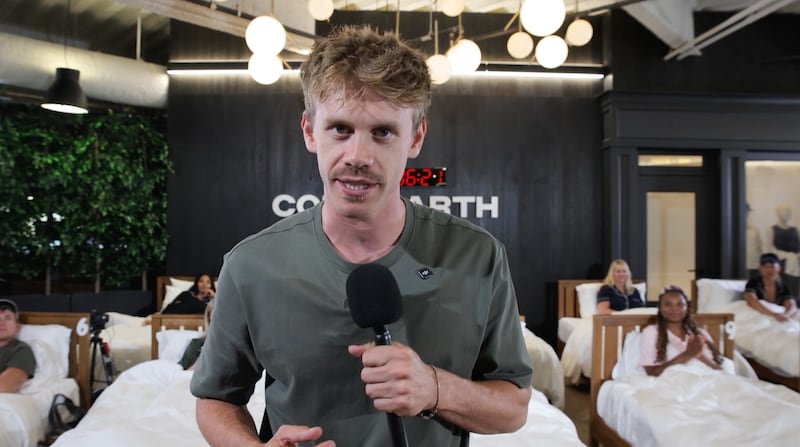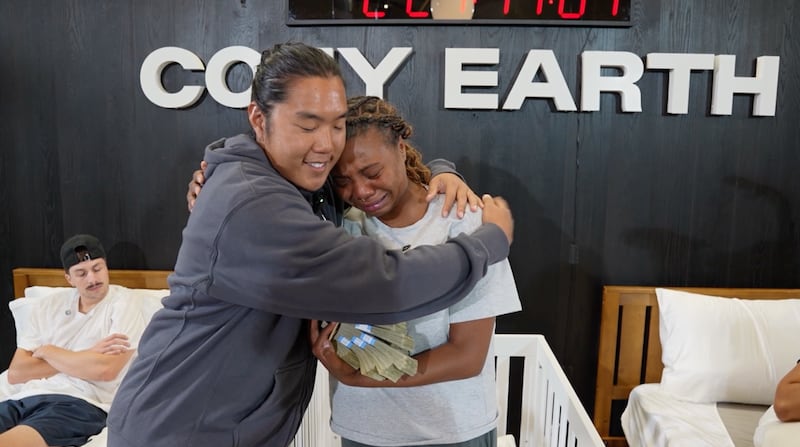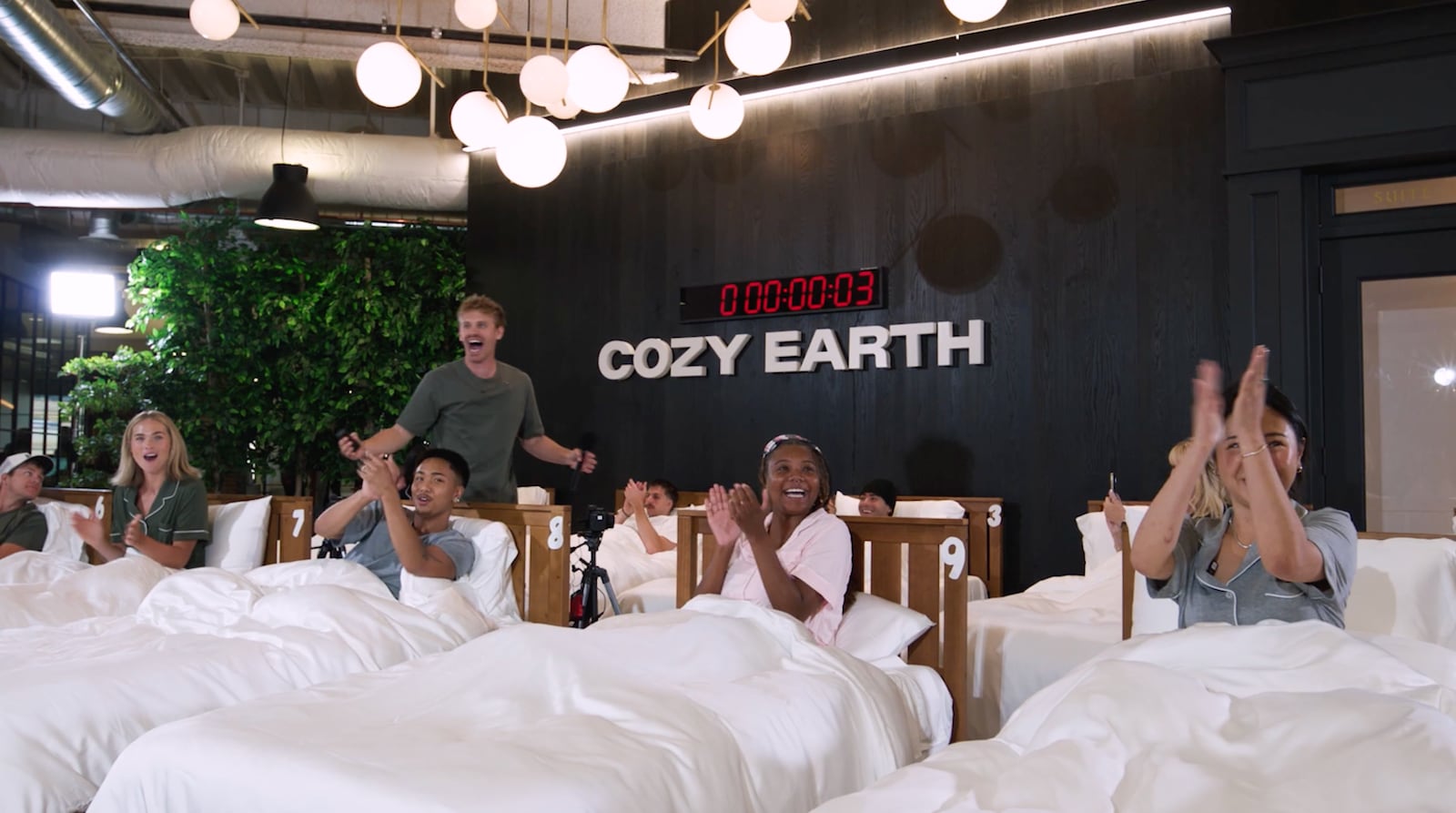When 27-year-old Katera Amann showed up to compete in Cozy Earth’s Bed Rot Challenge in California, she had just $200 in her bank account. Things became even more precarious for her finances after a hotel billing snafu left her with only $49 in her account, which dwindled to $3 during the challenge.
Lehi, Utah-based Cozy Earth, which produces premium, organic bedding and loungewear — a bamboo sheet set, an “Oprah favorite,” starts at $258 — launched the competitive Bed Rot Challenge in early 2025. Bed-rotting, which basically means spending an inordinate, continuous amount of time in bed, emerged in the Gen Z lexicon around 2023, giving rise to such skeptical headlines as Fast Company’s “‘Bed-rotting’ doesn’t mean Gen Z is lazy, but is it really self-care?”
So the cheeky term had been kicking around for a while when George Davis, Cozy Earth’s CMO, came up with an idea that he knew had the potential to be a viral sensation — or an utter embarrassment: to have contestants compete for the longest time spent in bed, with reality-TV type challenges (really, hazings) thrown in to make things more interesting. The challenge would last six days, during which time only bathroom breaks would be allowed. No showers would be permitted; teeth-brushing had to be done in bed. Eating as well. The winner would receive $25,000, and $3,000 buyouts and consolation gifts would be offered along the way to narrow the field.
Cozy Earth founder and CEO Tyler Howells enthusiastically greenlit the project. “From day one, we’ve always tried to think outside the box,” he says. “The charge I’ve given the company was that no idea was too outlandish. There was some risk there; it could’ve totally flopped.” But Davis’s bold concept began to take shape, and soon, Howells was thinking, “This is going to be good. Let’s give it everything we have. We’re using our ideas as our competitive advantage.”
The company was able to enlist content whiz London Lazerson, who was also the first content creator to host a Red Bull event, to oversee the proceedings.

A viral showdown
Amann was dog-sitting when she first saw Cozy Earth’s call for participants on TikTok. She sent in a video, and the Cozy Earth team liked what they saw. The Illinoian became one of 11 participants in Season 2, which was held in August 2025. (Season 1 was the beta version, using company personnel as contestants.) As the 11 combatants assembled, Amman’s dire financial situation became her “story.”
Eleven participants became 10 when, in “Survivor”-like style, one competitor was quickly voted out of the bedroom. The “loser” didn’t fare too badly, though: “Cozy Earth gave her a vacation in Hawaii,” Amann says.
One less contestant for Amann to beat.
Meanwhile, the TikTok livestream was steadily growing. By the end of the challenge, it would top out at 51 million organic impressions, 85 million total impressions, and 60,000 total followers gained. Cozy Earth aims to replicate or surpass this viral success with the debut of season three, which debuts today, Oct. 1.
Values-driven content
Howells founded Cozy Earth during an auspicious time for content marketing, which was arguably at its apex. In the early 2010s, corporate marketing efforts had begun to venture beyond traditional advertising partnerships. Brands wanted to be known for far more than their products; they wanted to represent a lifestyle. Social media was adopted in fits and starts during this period. Did Twitter users really want to see the platform that was intended for individual, authentic voices suddenly inundated with corporate messaging? In terms of both efficacy and reach, the jury was still out.
Howells concedes that he’s always been “a little skeptical” of corporations on social media, but the Bed Rot Challenge felt different. It was an opportunity to showcase Cozy Earth company values — which include wellness, comfort and self-care — in a fun, entertaining way.
“When we started Cozy Earth, there was no such thing as a Facebook ad, no apps for your phone for Facebook or Google,” Howells recalls. “We didn’t have venture capital funding then, so we had to resort to old-school guerrilla ways to get our product in front of consumers, whether it was trade shows or interior designer meetups.”

As Lazerson notes, the challenge is about being entertained for free.
“Not to throw shade on any other companies, but most brands have to get ROI immediately in today’s world,” he continues. “Most brands are forgetting their purpose — being a voice. Cozy Earth is creating brand moments.”
That’s not to say that ROI wasn’t seen: While direct conversion rates are hard to come by, Davis says that Cozy Earth recently increased year-over-year sales (2024 to 2025) by 10 percent.
Real people, real impact
Of course, as Howells points out, the Bed Rot Challenge is tongue-in-cheek. Bed-rotting is understood to reference doomscrolling and solitude, while the event is all about connection.
“For some people, bed-rotting is a very painful thing — it’s not funny at all,” Howells says. “We’re not about that. Our whole brand is about making home the best part of life. In order to do that, you have to have humans; you have to be connecting with people. This is about strangers in a fun competition, keeping it super positive and upbeat.”
For Lazerson’s part, the experience “opened my eyes to the state of America.” Amann’s dwindling bank account made a big impact on him.
“My heart grew a couple sizes from Kat,” he says.
At the end of season two, Amann made it to the final challenge round, which involved cutting through a homemade mattress with baby shears to find keys that would open the safe containing the prize money. The first key she tried opened the safe.
“I couldn’t have scripted it better myself,” Lazerson says.

